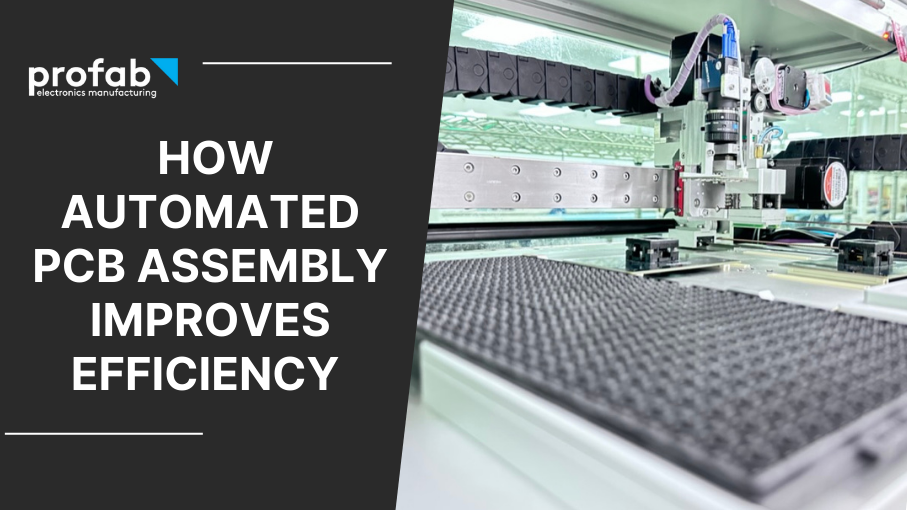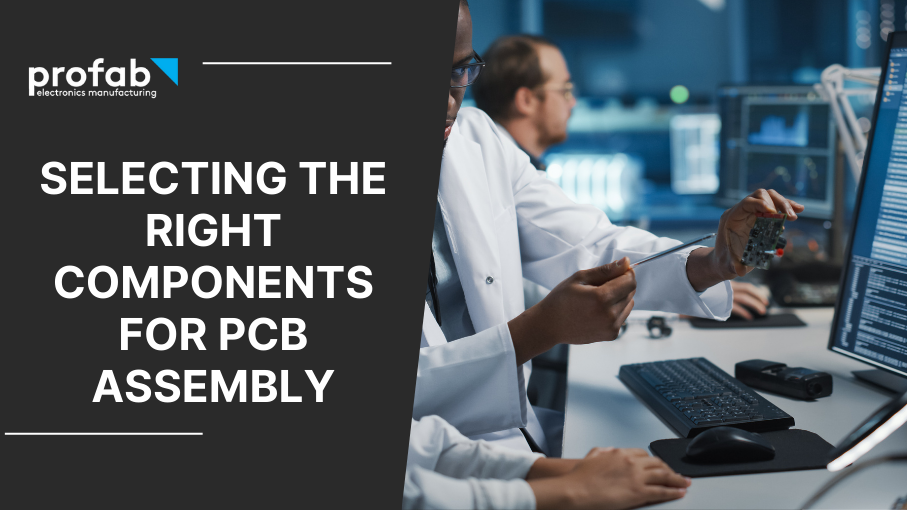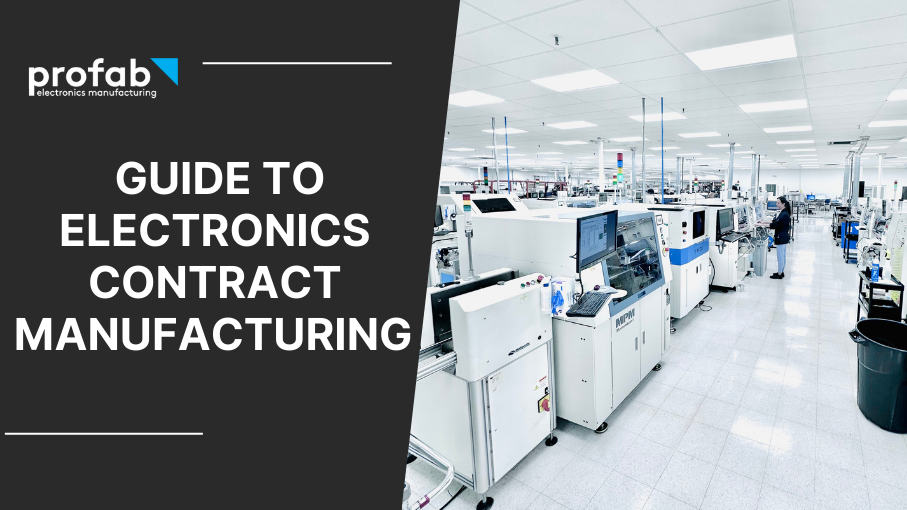
How Automated PCB Assembly Improves Efficiency
With the growing market demand for PCBs, designing for automation is the ideal option for all sectors
In the rapidly evolving field of electronics, achieving efficiency and precision in the production of printed circuit boards (PCBs) has become a critical objective. Automation, employing advanced machinery and artificial intelligence, offers a solution to meet the growing demands for quality, speed, and reliability in PCB manufacturing. This article looks into the numerous ways automated processes contribute to the efficiency of PCB manufacturing.
Speed and Consistency in PCB Assembly
High-Speed Pick-and-Place Machines
The introduction of automated high-speed pick-and-place machines has transformed the PCB assembly line. These machines can place thousands of components per hour, significantly reducing the assembly time and increasing throughput. The consistent accuracy in component placement ensures a uniform product, enhancing product reliability. Unlike manual placement, automation guarantees that each part is placed precisely every time, regardless of the complexity or size of the production run.
Automated Soldering Processes
Soldering, a vital process in PCB assembly, has been improved through automation. Robotic soldering ensures a uniform application of solder to each joint, maintaining consistent quality. This eliminates the variability that can occur with manual soldering, providing faster and more precise soldering of components. By automating this process, manufacturers can avoid human errors that could lead to defects, ensuring a more robust final product.
Automated Optical Inspection (AOI) Systems
AOI systems have become a cornerstone in modern PCB manufacturing. These systems swiftly scan and inspect PCBs for errors, such as incorrect component placement or soldering defects. The immediate feedback provided to the production line allows for quick corrections, minimizing downtime. Automation in inspection not only accelerates the process but also enhances the detection of flaws that might be missed during manual examination.
Enhanced Accuracy and Precision
3D X-ray Inspection Systems
3D X-ray inspection gives manufacturers an unprecedented level of insight into the internal structures of PCBs. It allows for a detailed view of solder joints and hidden connections, uncovering defects that might not be visible to the naked eye. The ability to conduct such in-depth inspections ensures that hidden errors are detected and corrected before the product reaches the consumer, thereby enhancing the overall quality and reliability of the PCBs.
Automated Testing Equipment (ATE)
ATE has revolutionized the way PCBs are tested. By automating complex tests, ATE can perform intricate and accurate testing tasks that would be beyond manual capabilities. Repeatability is a critical feature of ATE, allowing for consistent testing across large batches of PCBs. This ensures that every board meets the required standards, creating a uniform product quality across the entire production run.
Robotic Dispensing Systems
Robotic dispensing systems are instrumental in the precise application of adhesives, coatings, and other essential materials in PCB manufacturing. Their accuracy ensures that the exact amount of material is applied where needed, minimizing waste and maximizing efficiency. Such precision cannot be consistently achieved through manual dispensing, making automation essential in modern, large-scale PCB production.
Improved Material and Workflow Management
Robotic Material Handling
The efficiency of material handling can have a significant impact on overall production efficiency. Robots equipped with the latest technology can move and sort materials much faster than human operators. Automated material handling minimizes the chances of incorrect component placement or loss, ensuring that the right materials are always in the right place at the right time.
Automated Inventory Management Systems
Inventory management is a complex task that has been greatly simplified through automation. Automated inventory management systems enable real-time tracking of every component, providing a clear understanding of stock levels and location. The adoption of Just-In-Time (JIT) delivery systems ensures that materials are ready precisely when needed, reducing storage costs and enhancing the overall efficiency of the production process.
Enhanced Quality Control
Automated Quality Assurance (QA) Processes
Quality control is paramount in PCB manufacturing, and automation plays a key role in maintaining uniform quality. Automated QA processes allow for continuous monitoring and real-time adjustments, ensuring that every PCB meets the defined standards. By employing automated data collection and analysis, manufacturers can implement ongoing improvements, optimizing both the quality and efficiency of production.
Machine Learning and AI Integration
The integration of machine learning and artificial intelligence into PCB manufacturing has opened new horizons in efficiency. Predictive maintenance, made possible through AI, can predict machine failures before they occur, minimizing downtime and maintaining continuous production. The ability of machines to learn from experience and adapt opens the door to continuous process optimization, further enhancing efficiency and quality.
Integration of Human Expertise with Automated Processes
Collaborative Robots (Cobots) in PCB Assembly
In many advanced PCB manufacturing facilities, humans and robots work side by side. Collaborative robots, or cobots, are designed to interact with human operators in shared workspaces. This collaboration allows for a blend of human creativity and machine precision, leading to more innovative and accurate results. Cobots can handle repetitive tasks, freeing human workers to focus on more complex and creative aspects of PCB production.
Human Oversight of Automated Systems
While automated systems manage many aspects of PCB manufacturing, human expertise remains vital in overseeing and directing these systems. Engineers and technicians monitor the automated processes, providing insights and making necessary adjustments based on their experience and understanding of the materials and technologies involved. This synergy between human intelligence and automated efficiency results in a more flexible and responsive production process.
Training and Skill Development
Automation in PCB manufacturing requires a workforce with specialized skills and knowledge. Ongoing training and development programs ensure that human operators can work effectively with automated systems. This includes understanding the latest technologies, troubleshooting automated machines, and contributing to continuous process improvement. By investing in the continuous growth and education of the workforce, manufacturers ensure that human expertise evolves alongside technology, adding value to the entire process.
Ethical Considerations and Workforce Transition
The move toward automation in PCB manufacturing also brings ethical considerations to the fore, particularly concerning workforce displacement. Responsible integration of automation involves creating new roles and opportunities for workers affected by automation. Transition plans, reskilling initiatives, and an emphasis on the human role in a highly automated environment help ensure that the move toward automation is not only efficient but also socially responsible.
Automation in PCB manufacturing represents a confluence of cutting-edge technologies and methodologies that collectively enhance efficiency, quality, and cost-effectiveness. From the accelerated assembly line to intelligent quality control, automation brings unparalleled advantages. As technology continues to advance, the role of automation in PCB manufacturing will likely grow even more significant, shaping the future of the industry. For manufacturers and businesses alike, embracing automation means keeping pace with industry demands, ensuring that products meet high standards, and positioning themselves at the forefront of innovation.
In a landscape where consumer expectations for quality and speed continue to rise, automated PCB manufacturing offers a pathway to success. The integration of intelligent systems, real-time monitoring, and precision in every step of the manufacturing process is more than a trend; it's a necessary evolution.
Investment in automation not only aligns with current industry needs but also paves the way for future development. As technologies such as Artificial Intelligence and Machine Learning continue to mature, they will inevitably find even more applications within the PCB manufacturing process, pushing efficiency to new heights.
Ultimately, automated PCB manufacturing is about more than machines and technology; it's about fostering a culture of continuous improvement, precision, and excellence. It is a holistic approach that touches every aspect of the manufacturing process, driving innovation, sustainability, and success.
For businesses looking to grow and adapt in an ever-changing technological landscape, understanding and integrating automated PCB manufacturing is a critical step. The promise of faster production times, consistent quality, reduced costs, and environmental responsibility makes automation not just an attractive option but a necessary one.
Manufacturers, suppliers, stakeholders, and end-users must recognize the essential role automation plays in modern PCB manufacturing. By doing so, they embrace a future where technology and human ingenuity combine to create products that are not only efficient and reliable but also innovative and forward-thinking. The era of automated PCB manufacturing has arrived, and those ready to take part will find themselves at the cutting edge of a new and exciting frontier.
About Profab Electronics
Profoundly embedded in the electronics manufacturing sector, Profab Electronics has been steadfast in its commitment to deliver excellence for over three decades. Our unparalleled experience, fortified by our stringent quality standards, positions us as a trusted partner in the realm of Electronics Manufacturing Services (EMS).
We're an ISO 9001 and AS9100 certified company, and our adherence to these globally recognized standards attests to our unyielding quest for quality. Our team comprises experts who hold formative training on the latest IPC standards, ensuring that we consistently produce electronic products of the highest caliber.
Our proficiency lies in PCB assembly, offering a spectrum of services ranging from Surface Mount (SMT) to Through-Hole Assembly. From the initial stages of prototyping to high volume pcb assembly, we offer comprehensive solutions to meet client requirements.
At Profab Electronics, we synergize our expertise and experience to deliver high-quality electronic products. Our unwavering commitment to quality, innovation, and customer satisfaction has established Profab Electronics as a leader in the electronics manufacturing industry. Trust us to bring your technological visions to life.
Latest Posts

Learn how choosing the right materials and embracing newer technologies can lead to high-performance, reliable PCBs, and discover our collaborative approach to ensuring superior end products.

Discover the transformative journey of PCB assembly and Profab Electronics' pivotal role, from early innovations to today's advanced technologies.

From Selection to Quality Assurance: Navigating the Intricacies of Outsourced Production